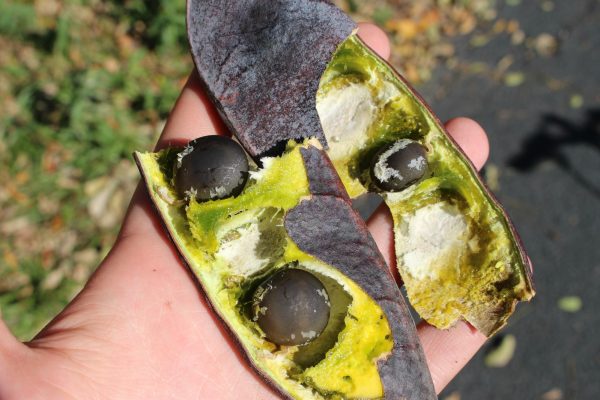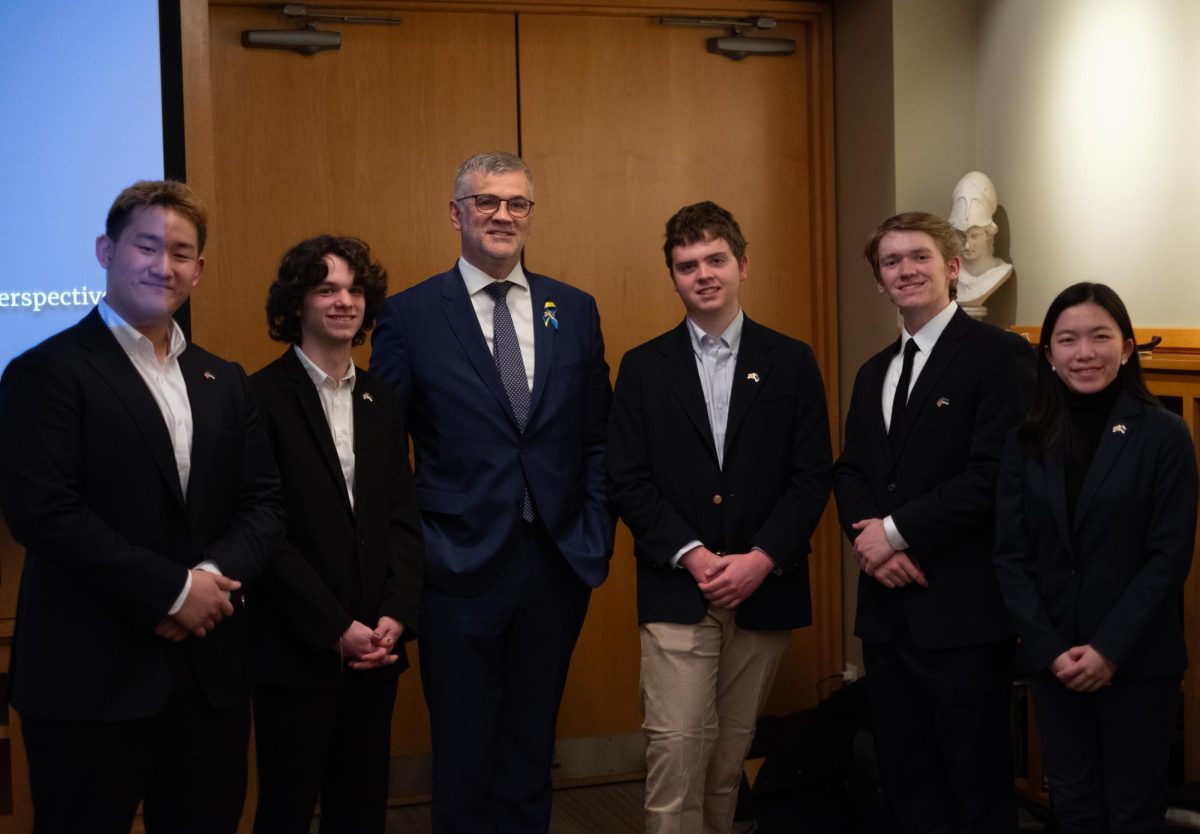You might not notice a Kentucky coffee tree if it weren’t for its distinctive pods, which can be seen dangling from branches or picked up from the ground around it. These tough brown pods each contain several round fingernail-sized seeds. These seeds are so hard that the trees don’t usually germinate on their own, so scientists believe that the tree evolved to depend on extinct animals such as woolly mammoths to eat the pods and crack the seed coats. The seeds were also used by tribes throughout this region as a source of food, drink and to make game pieces. They helped the trees disperse and germinate— groves of Kentucky coffeetree are often associated with the sites of ancient Native American villages. European settlers also used a beverage brewed from the seeds as a substitute for coffee, hence the tree’s name.
The raw seeds are poisonous and must be roasted for several hours to make them edible, at which point they can be eaten like roasted chestnuts or ground and brewed like coffee. In the author’s opinion, the flavor or the beverage is interesting, but fairly bad.
These days, the Kentucky coffee tree is frequently planted in cities because it is hardy and pest-resistant. You can see them on campus in front of Watson and near Boliou. The Arboretum is also evaluating the species as part of our climate adaptation plan. Along with sycamore and swamp white oak, it is at the northern edge of its range here in Minnesota and so, we hope it to be resistant to rising temperatures in the arboretum.
Whether you pick up a couple seeds as tokens or see them planted as part of climate resilient forests, be sure to spare a thought for the humble Kentucky coffeetree.










